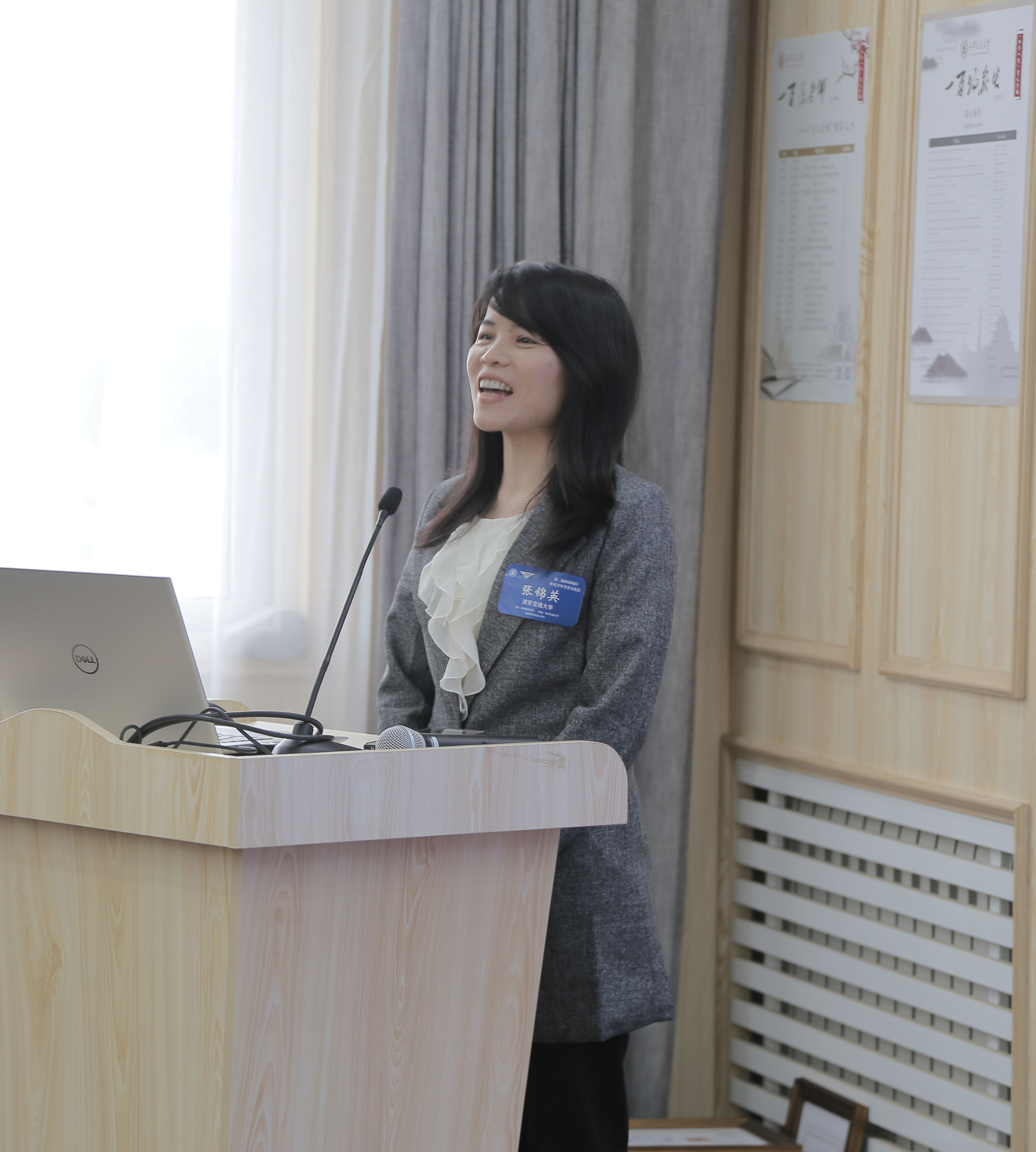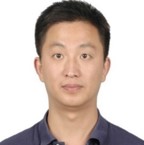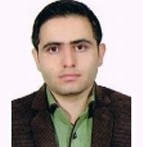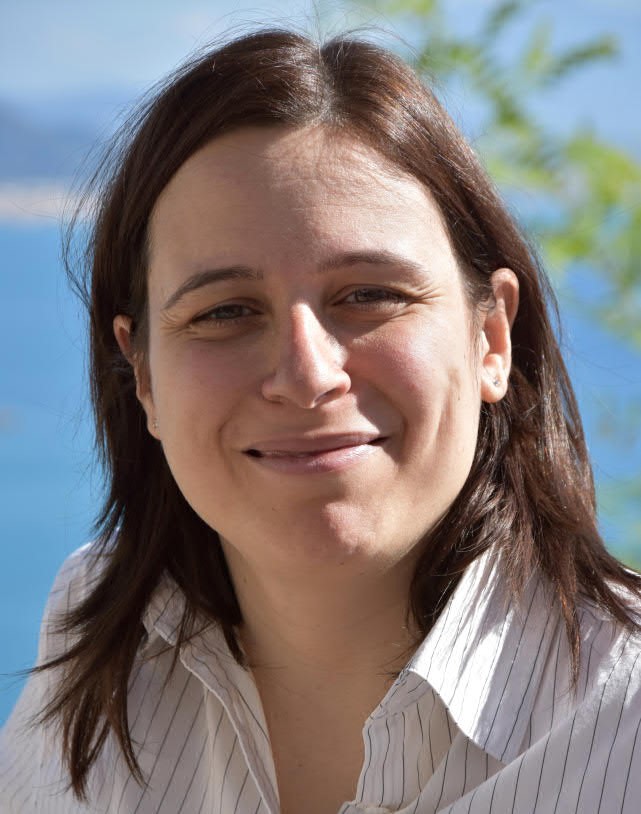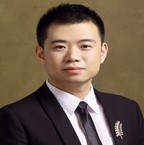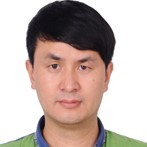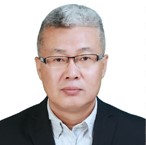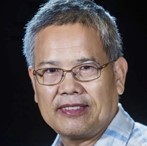Invited Speakers
Prof. Dr. Abderrazzak Douhal
Full Professor, Departamento de Química Física, Facultad de Ciencias Ambientales y Bioquímica, and INAMOL, Universidad de Castilla-La Mancha, Avenida Carlos III, S/N, 45071 Toledo, SpainSpeech Title: Ultrafast Photobehavior of MOFs and Related Composites: Relevance to Photonic Applications
Dr. Jinying Zhang
ProfessorState Key Laboratory of Electrical Insulation and Power Equipment
Center of Nanomaterials for Renewable Energy
School of Electrical Engineering
Xi’an Jiaotong University
China
Speech Title: Violet phosphorus and phosphorene
Abstract: Violet phosphorus was first promoted by Hittorf in 1865 and structurally characterized by Thurn and Krebs in 1969. It was named ‘violet phosphorus’ due to its purple colour. However, no convincing experimental data has been obtained to for violet phosphorus since its promotion in 1865. It was even debated that whether violet phosphorus was even a stable allotrope or a metastable intermediate from red to black phosphorus. We have synthesized violet phosphorus single crystals with sizes of millimeter in lab. The single crystals are dark red transparent instead of purple. The lattice structure of the as-produced violet phosphorus has been determined to be monoclinic with a space group of P2/n (13), CSD-1935087. The interlayer distance of violet phosphorus was demonstrated to be 1.1 nm. The yield of violet phosphorus has been improved to be 80%. The decomposition temperature of bulk violet phosphorus (512 °C) is 52 °C higher than that of black phosphorus (460 °C), indicating that violet phosphorus is the most stable phosphorus allotrope. Violet phosphorene has for the first time been exfoliated by both mechanical and liquid methods under ambient conditions. The work function of violet phosphorene nanoflakes has been shown to decrease with the increase in layers from 5.16 eV to 4.79 eV and tends to be stable on a gold substrate. The work functions measured on a silicon oxide substrate are much higher due to charge accumulation. The band alignments of different layered violet phosphorene materials were also calculated to give a practical route for future applications.
Keywords: Violet phosphorus, violet phosphorene, lattice structure, yield, work function, band alignment.
Dr. Xuge Fan
Researcher, Division of Micro and Nanosystems, School of Electrical Engineering and Computer Science, KTH Royal Institute of Technology, SwedenSpeech Title: Fabrication, characterization of suspended graphene with attached masses and their application in ultra-small and sensitive NEMS accelerometers
Abstract: Graphene, as an ultra-thin 2D membrane material, is very promising in applications of micro- and nanoelectromechanical system (MEMS and NEMS) due to its atomic thickness and unique mechanical, electrical and optical properties. Currently, studies have successfully shown the feasibility of using suspended graphene in resonators, pressure sensors, switches, loudspeakers, microphones and gas sensors, etc. Suspended graphene can be fabricated by transferring graphene from the original substrate to 1) a pre-fabricated substrate with trenches, cavities or membranes made of dielectric layers, or 2) a flat silicon dioxide (SiO2) or polymer substrate surface and then removing parts of the material underneath the graphene by sacrificial etching. However, fabrication of suspended graphene structures, especially suspended graphene with an attached proof mass is very challenging, such as collapse and rupture of the suspended graphene. We report a robust route for fabricating double-layer CVD graphene membranes and ribbons with attached SiO2/Si proof masses, which is compatible with wafer-scale MEMS and semiconductor manufacturing technologies. Graphene ribbons and membranes with attached SiO2/Si proof masses were demonstrated to be extremely robust and were able to withstand AFM tip indentation forces of up to ~7000 nN. Based on atomic force microscope (AFM) tip indentation experiments, the averaged Young’s modulus of stacked double-layer CVD graphene films in our devices was extracted to be 0.22 TPa. The built-in stress of hundreds of MPa exist in the graphene ribbons and thereby cannot be ignored. The measured resonance frequencies of graphene ribbons and membranes with attached SiO2/Si proof masses ranged from tens to hundreds of kHz, with Q between ~101 and ~102. We demonstrate that the suspended graphene ribbons and membranes with attached SiO2/Si proof masses can be used as combined spring-mass and piezoresistive transducers in NEMS accelerometer. The graphene NEMS accelerometers occupy at least two orders of magnitude smaller die area than conventional state-of-the-art silicon accelerometers while keeping competitive sensitivities. These findings pave the way for a new class of extremely small and highly sensitive graphene NEMS devices and are an important step toward bringing ultra-small piezoresistive graphene NEMS closer toward deployment in emerging applications such as internet of things (IoT) devices.
Dr. German Prieto
IFISUR-CONICETSpeech Title: A novel carbon nanotube ink as a lubricant for extreme conditions
Abstract: In high demanding applications, such as oil extraction, mining equipment, or aerospace components, lubrication using oils or greases is sometimes not possible, due to the elevated contact stresses involved, high temperatures, low sliding speeds, high vacuum, and even radiation damage. In these kinds of environments, solid lubricants are often the only available choice for preventing excessive wear and reducing friction between sliding surfaces.
For this purpose, a novel and eco-friendly method for dispersing carbon nanotubes and metallic sulfide nanoparticles was developed. These dispersions were used to generate layers of nanoparticles in the form of soft coatings that prevented direct metal-to-metal contact and lowered the friction coefficient. The obtained soft coatings were evaluated in a reciprocating tribometer under different atmospheric conditions, to analyze the influence of ambient humidity on their frictional response and durability. Wear surfaces were examined using SEM-EDS and Raman microspectrometry.
The obtained results have shown that carbon nanotube coatings deposited with this method have excellent lubricant properties under a wide range of conditions, providing low friction coefficients and wear protection of steel substrates.
Keywords: carbon nanotubes, bismuth sulphide, nanoparticles, lubrication, wear, friction.
Dr. Zheyu Shen
Professor, Biomaterials Research Center, School of Biomedical Engineering, Southern Medical University, ChinaSpeech Title: T1–Weighted Magnetic Resonance Imaging and Ferroptosis Therapy of Tumors
Abstract: Gd-chelates based positive contrast agents have dominated the magnetic resonance imaging (MRI) contrast agent market for decades. Nevertheless, they have been reported to be nephrotoxic and the U.S. FDA has issued a general warning concerning their use. In this study, we synthesized exceedingly small magnetic iron oxide nanoparticles (ES-MIONs) for MRI of tumors, which is more biocompatible than Gd-chelates. We synthesized ES-MIONs with 7 different sizes below 5 nm, and found that 3.6 nm is the best particle size due to its highest r1 value (8.8 mM -1 s -1) and lowest r2/r1 ratio (2.6) (1.5 T). [1] To increase the r1 value and decrease the r2/r1 ratio, based on the ES-MIONs, we synthesized dotted core-shell nanoparticles with superhigh r1 value (70.0 mM -1 s -1) and very low r2/r1 ratio (1.98) (1.5 T) for high contrast T1-weighted MRI of tumors. MRI of tumors shows a superhigh tumor ΔSNR for the dotted core-shell nanoparticles (477 ± 44 %), which is much higher than that of Magnevist (75 ± 11 %). The highest tumor ΔSNR of our nanoparticles at low dosage of 0.5 mg / kg (84±9 %) is even higher than that of Magnevist at high dosage of 5.0 mg / kg (75±11 %), indicating a much lower nephrotoxicity risk for our nanoparticles. Based on the ES-MIONS, we further developed glutathione-responsive self-assembled magnetic gold nanowreath for MRI-guided photothermal therapy of tumors, and developed Fenton-reaction-acceleratable magnetic nanoparticles for MRI-guided high-efficiency ferroptosis therapy of orthotopic brain tumors.
Keywords: ES-MIONs, MRI contrast agents, tumor diagnosis, photothermal therapy, ferroptosis therapy
Dr. Mohammad Hatami
Associate Professor of Esfarayen University of Technology, North Khorasan, IranSpeech Title: Nanofluids application in diesel engines (such as nano-fuel, nano-coolant and lubricant)
Abstract: Nanofluids have a wide application in different industries such as internal combustion engines (ICEs). The most usable criteria of nanofluids in ICEs are nano-fuels (as additives), Nano-lubricants (as oils) and nano-coolants (such as radiator cooling). In this project, we will review and study all of the possible nanofluids in these three applications and try to find the best performance in each application using experimental and numerical methods. The effect of nanofluids on the wear, friction reductions, fuel efficiencies, thermal efficiency, emissions and etc. is discussed and suitable nanofluids are presented. For instance, MoS2 nanoparticles had the best performance on the lubrication process.
Dr. Shahab Ahmad
Assistant Professor, Department of Physics, Indian Institute of Technology (IIT)-Jodhpur, IndiaVisiting Scientist, University of Cambridge, UK.
Speech Title: Advanced Materials for New Generation Energy Storage Devices
Abstract: With several recent advancements in rechargeable battery technology the new generation energy storage systems are comprised of electrodes with multi-functionalities for unconventional device applications [1]. For instance, Li-ion batteries are made flexible and shape conformal to power fully flexible consumer electronic devices such as wearable electronics, flexible displays etc. Design of highly flexible battery requires judicious engineering of electrodes to mitigate stress concentration and crack formation. We demonstrated ultra-flexible Li-ion batteries by designing CNT microstructures, loaded with nanocrystals, which decouple the stress induced during bending between the collector electrode and energy-storage material. These unique light weight electrodes not only alleviate stress, but also bring the active particles outside of the binder, which dramatically enhances the device performance [2-3]. Emerging autonomous electronic devices require increasingly compact energy generation and storage solutions. Merging these two functionalities in a single device would significantly increase their volumetric performance, however this is challenging due to material and manufacturing incompatibilities between energy harvesting and storage materials. We recently demonstrated highly versatile and hybrid photo-rechargeable energy storage devices where the functionality of rechargeable battery and solar cell are merged together in a single optoelectronic device termed as photo-battery to avail advantages of both technologies simultaneously [4-7].
References:
[1] S. Chu, A. Majumdar, Opportunities and challenges for a sustainable energy future, Nature, 488 (2012) 294-303.
[2] Shahab Ahmad, D. Copic, C. George, M. De Volder, Hierarchical Assemblies of Carbon Nanotubes for Ultraflexible Li-ion Batteries, Advanced Materials, 28 (2016) 6705-6710.
[3] S. Jessl, D. Copic, S. Engelke, Shahab Ahmad and M. De Volder, “Hydrothermal Coating of Patterned Carbon Nanotube Forest for Structured Lithium‐Ion Battery Electrodes”, Small (2019) 1901201 (1-6).
[4] Shahab Ahmad, C. George, D.J. Beesley, J.J. Baumberg, M. De Volder, Photo-Rechargeable Organo-Halide Perovskite Batteries, Nano Letters, 18 (2018) 1856-1862.
[5] Shahab Ahmad, P. K. Kanaujia, W. Niu, J. J. Baumberg and G. V. Prakash, “In-situ intercalation dynamics in inorganic-organic layered perovskite thin films”, ACS Applied Materials and Interfaces 6 (2014) 10238.
[6] Shahab Ahmad, P. K. Kanaujia, H. J. Beeson, A. Abate, F. Deschler, D. Credgington, U. Steiner, G. V. Prakash and J.J. Baumberg, “Strong photocurrent from 2D excitons in solution-processed stacked perovskite semiconductor sheets”, ACS Applied Materials & Interfaces 7 (2015) 25227.
[7] A. Sadhanala, Shahab Ahmad, B. Zhao, S.E. Dutton, F. Deschler, P. M. Pearce, N. Giesbrecht, R. L. Z. Hoye, K. C. Goedel, T. Bein, P. Docampo, M. De Volder and R.H. Friend. “Blue-Green Colour Tunable Solution Processable Organolead Chloride-Bromide Mixed Halide Perovskites for Optoelectronic Applications”, Nano Letters 15 (2015) 6095.
Dr. Filippo Giubileo
Researcher, Institute for Superconductors, Innovative Materials and Devices (SPIN), Italian National Research Council (CNR), ItalySpeech Title: Characterization of InSb nanopillars for field emission applications
Abstract: A piezoelectrically driven metallic nanoprobe is installed inside a scanning electron microscope in order to perform local characterization of the field emission properties of InSb nanopillars. The tip-shaped anode can be precisely positioned at sub-micron distances from the emitters, to collect electrons from areas as small as 1um2 under the application of external bias up to 100 V. Current-voltage characteristics are measured for cathode-anode separation down to 500 nm and are analyzed in the framework of the Fowler-Nordheim theory. We give estimation of performance parameters such as the field enhancement factor and the turn-on field and their dependence on the cathode-anode separation distance. We demonstrate the time stability of the emitted current for several minutes. Finally, we perform a finite element electrostatic simulation to calculate the electric field in proximity of the nanopillars and we evaluate the effective emitting area as well as the screening effect due to presence of other pillars in close vicinity. In conclusion, we show that InSb nanopillars are very stable emitters, that allow current density as high as 104 A/cm2 and excellent time stability, crucial characteristics to envisage device exploitation.
Keywords: Indium antimonide, semiconducting nanopillars, field emission, field enhancement factors, turn-on field, electric field simulations
Dr. Paola Vivo
Associate Professor, Tampere University (TAU), FinlandSpeech Title: The effect of metal doping/co-alloying on the synthesis of all-inorganic halide perovskite nanocrystals
Abstract: The doping of colloidal halide perovskite nanocrystals (PNCs) with manganese cations (Mn2+) has recently enabled enhanced stability and novel optical properties and charge carrier dynamics in PNCs. However, the influence of Mn-doping on the synthetic routes and the band structures of the host PNCs has still not been clearly elucidated. Herein, we prove that Mn-doping promotes a facile, less toxic, and less corrosive path toward the synthesis of all-inorganic bismuth-based PNCs (Cs3Bi2I9) by effectively suppressing the CsI by-product of the Cs3BiI6 intermediate decomposition reaction. Furthermore, the energy levels of the as-formed Cs3Bi2I9 PNCs can be tuned upon different Mn-doping amounts. This results in a higher open-circuit voltage of the corresponding PNCs-based solar cells compared to those employing the undoped Cs3Bi2I9.
The heterovalent co-alloying of the B-site of perovskites has been also proposed as effective strategy to tune the optoelectronic properties of perovskites both in bulk and nanocrystals. Here, we demonstrate for the first time the alloying of lead (Pb) with titanium (Ti) as a successful approach to reduce the toxicity of PNCs and engineer their morphology and optical properties.
Our work opens new insights on the role of doping and co-alloying in the synthetic route and optoelectronic properties of halide PNCs with reduced toxicity.
Keywords: Halide perovskite nanocrystals, optoelectronic devices, colloidal synthesis, lead-free, doping, co-alloying.
Prof. Esteban Broitman
SKF Research & Technology Development, 3430 DT Nieuwegein, The NetherlandsSpeech Title:
Dr. Jinghui Gao
Associate Professor, Xi’an Jiaotong University, ChinaSpeech Title:
Dr. Muhammad Akhyar Farrukh
Associate Professor of ChemistryForman Christian College (A Chartered University), Lahore, Pakistan
Speech Title: Metal oxides doped graphene oxide nanocomposites and their applications
Abstract: Multiple approaches have been carried out to synthesize the rare earth-transition metal oxides nanocomposites as well as graphene oxide and reduced graphene oxide doped with metal oxides for the purpose to achieve enhanced activities for the degradations of textiles pollutants, pesticides, organic pollutants, explosive materials etc. We have successfully synthesized more than 50 nanocompostes with variety of metals. Various factors e.g. change in precursors, pH, temperature, feed rate, surfactants, solvents, methods of preparation, concentration of precursors, were studied which change the efficiency of the nanocomposites. Our focus is to synthesize nanocomposites having band gap in the visible region so that they may be used for enhanced catalytic activity under sun light. The structural investigation, thermal degradation, crystallite size, morphology, surface and photocatalytic properties of synthesized samples were studied by using different characterization techniques i.e. Thermogravimetric analysis (TGA), Differential scanning calorimetry (DSC) Fourier transform-infrared spectroscopy (FTIR), Particle Size Analyzer (PSA), Powder X-ray diffraction (XRD), Scanning electron microscopy (SEM), Transmission electron microscopy (TEM), and Ultraviolet-Visible spectrophotometer (UV-VIS). Applications of nano-materials in formulation of nanofiltration nano-medicines, solar cells, forensics, slow release fertilizers, photodegradation, and nanocatalysts for synthesis of organic reactions were also studied. Keywords: Nanocomposite, graphene oxide, reduced graphene oxide, characterization, applications.
Keywords: Nanocomposite, graphene oxide, reduced graphene oxide, characterization, applications
Dr. Naveed Zafar Ali
Senior ScientistNational Centre for Physics, Quaid-I-Azam University Campus, Islamabad, Pakistan
Speech Title: Exploring the Dynamics of Molecular Rotors in Novel Framework Materials for Renewable Energy Technology
Abstract: Conceptual design of molecular rotors based framework materials is of great importance among energy storage and conversion technology applications. Research endeavours in the pursuit of next generation “super-protonic solid acids proton conductors” for Fuel Cell applications and as “solid state electrolyte (SSE)” for all solid state batteries has seen a huge research thrust in the recent decade. The basic concept rely solel on understanding the dynamics of ROTOR molecules ideally incorporated within the framework assembly that exhibits rapid reorientation of XO4 anion groups as the mechanism of proton transport.
In the first round of the talk, I will be talking about the conceptual designing of new ROTOR molecules and their role in achieving high proton conductivity as a substituent to NAFION membrane for PEM(proton exchange membrane) Fuel Cells. The preliminary focus would be to spotify new kind of hybrid functional architecture materials for their application in fuel-cell-powered vehicles. Focus will be to highlight new phosphate and silicate analogue to known sulfate and selenate solid acids with high conductivity and subsequently discuss methodologies to incorporate these functional guest rotor molecules into potential framework architeture, that will facilitate proton conduction through well defined crystalline pores at wide-ranging temperature window.
In second phae of talk, I will focus on the screening of potent rotor molecules as superion conducting solid state electrolyte (SSE) materials that offers high ionic conductivity, good ductility and processability, as well as good compatibility with the electrode rendering their ideal use in the research and application of all solid state batteries(ASSBs). The typical structural feature of these SSE decorated with “rotatable polyanion” is that the high temperature-induced drastic increase in the atomic displacement parameters (ADPs) of cental atoms with huge thermal ellipsoids, in such a way that the atoms ‘jump’ in a quantum-like manner from a given well-defined orientation into a dynamically disordered framework with subsequent disordered phase transition triggered by polyanion rotation leading to a sharp increase of cationic conductivity. Therefore, it is of great significance to get in depth structural insight into the rotational dynamics of polyanions in order to further optimize the properties (ion conduction and interface compatibility) of novel solid electrolyte. I will briefly discuss how the operando/in-situ synchrotron powder X-ray and neutron diffraction can be concomitantly used to study the rotational dynamics of polyanions in novel solid state electrolyte materials. The role of precise doping of selected elements at corresponding lattice sites will also be highlighted besides quantifying and discussing strategies to circumvent the emerging amorphous phases responsible for creating large charge transfer resistance at the Solid Electrolyte Interface (SEI).
Keywords: Solid electrolyte materials; Rotating dynamics of polyanions; Synchrotron X-Ray & neutron powder diffraction
Dr. Zhigang Zang
Professor, School of Optoelectronic Engineering, Chongqing University, ChinaSpeech Title:
Dr. Zhenyang Zhong
Professor, Department of Physics, Fudan University, ChinaSpeech Title:
Dr. Hui Jin
Professor, Xi’an Jiaotong University, ChinaSpeech Title: Nano carbon particle preparation and interface property control in supercritical water from waste plastic
Abstract: The global plastic production increased over years due to the vast applications of plastics in many sectors. The increasing consumption of plastics has led to a large amount of waste plastics being discarded in the natural environment, which contributed to the environmental problems. Now, plastic pollution has been one of the most important environmental problems faced today. And it is extremely urgent to dispose waste plastics rationally. As petroleum-based materials, waste plastics are potential hydrocarbon resources. Rational recycling of waste plastics has broad application prospects to cope with the energy crisis. Therefore, in this work, supercritical water gasification technology is employed to recycle waste plastics. With the excellent properties of supercritical water, such as high diffusivity, reactivity, and organic solubility, waste plastics have been successfully converted into clean fuels, and a batch of carbon spheres with excellent appearance have been prepared. Based on these carbon spheres, their formation conditions and mechanisms are also discussed. Moreover, the surface hydrophobic properties of these carbon spheres are also tested to find the relationship between the morphology of carbon spheres and their hydrophobic properties. Finally, in view of the particularity of this work, this method of plastics gasification in supercritical water is also expected to be applied to the drag reduction and anti-corrosion measures of small-size pipelines.
Keywords: Supercritical water; Plastic; Gasification; Carbon spheres
Dr. Wei An
Professor, College of Chemistry and Chemical Engineering, Shanghai University of Engineering Science, ChinaSpeech Title:
Prof. Guosheng Shao
Director, State Centre for International Cooperation on Designer Low-carbon & Environmental Materials (CDLCEM), Zhengzhou University, ChinaSpeech Title: Defect-free graphene powder : green and low-cost manufacturing, characterisation and application

